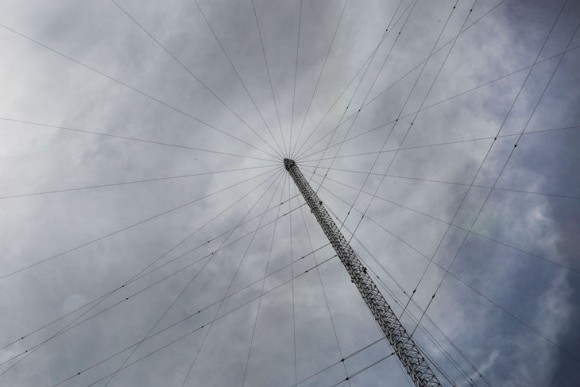System to be govt-owned, contractor-operated. The United Kingdom is continuing on its path toward having an integrated resilient national positioning, navigation, and timing (PNT) architecture.
While GPS and Galileo will continue to be accessed and used, sovereign PNT will be provided by a national clock network and a network of six government-owned, contractor operated eLoran sites.
As part of this effort, the UK government published a preliminary engagement notice on the 19th of May seeking input from industry and others on its eLoran program. The government is asking those who have clarifying questions to submit those by the 13th of June.
Subsequent to that initial notice additional information was published in two documents – “Annex A – Proposed Services and Mission Requirements” and “eLoran Market Engagement Questions.”
The program is described as “Build and operation of a nationally-owned UK eLORAN PNT system within the UK to provide resilient, terrestrial, sovereign, sustainable, and high-quality Position, Navigation and Timing.”
The UK eLoran program established in the National PNT Office has three goals:
- Building a nationally-owned eLoran PNT system to provide resilient, terrestrial, sovereign PNT capability for UK Critical National Infrastructure and the wider economy and society. Initial operating capability before 2028 and full operating capability by 2030.
- Ensuring interoperability with other national and international eLoran systems.
- Conducting research and development to ensure the long-term sustainability, continual improvement and expanded applications of the eLoran system.
The goal of the effort is greatly increased resilience to loss or interruption of PNT from GNSS.
Protection of timing services is the nearest term objective. Establishment and synchronization of the eLoran timing service with the national clock network being implemented by the National Physical Laboratory is targeted for 2027.
Having all UK critical national infrastructure resilient to PNT loss is planned for 2029.
The government is seeking input in two areas during the first part of the engagement process – technical feasibility and projected costs/business processes.
 Loran tower. Image: RNT Foundation
Loran tower. Image: RNT FoundationTechnical Feasibility
The proposed services/mission requirements document outlines some specific characteristics envisioned for the future system. These include:
- “Six transmitter sites to provide optimal coverage for United Kingdom economic area.” New sites will be in Northern Ireland, the Shetlands, the Outer Hebrides, East Anglia/Dover and South West Cornwall. The existing transmitter at the Anthorn site will be replaced as part of the program,
- 1.1 megawatt transmitters,
- Antennas 200M tall,
- The ability to operate with out electrical grid power for 48 hours,
- Three cesium atomic clocks at each site,
- Two-way satellite time transfer (TWSTT) capability, and
- Differential stations able to provide timing accuracy to within 20ns of UTC.
Projected costs/Business processes
The list of market engagement questions cautions respondents to not provide proprietary information or anything else that should not be share throughout the UK government or with other members of industry. Nevertheless, it poses some very specific questions about technical feasibility, costs, and business processes. These include questions about:
- Potential additional services that could be provided,
- Capital and operating costs,
- Main technical risks and constraints, and
- Industrial and end-user benefits.
This document also states that while a government-owned/contractor-operated system is contemplated due to “…national security requirements and international interdependencies” the government is willing to entertain an alternative delivery model.
This first part of the engagement process will last until July 4th. Input after that date will be considered but might not be as influential in the process as that received prior to the date.
While the announcement discusses the establishment of signals, it does not discuss the perhaps more complex task of adoption. It may be that user equipment, methods to ensure equipment is available, and signals are properly incorporated into infrastructure alongside GNSS will become important topics in subsequent phases of engagement.
Responses to the notice will be used by the cross-government eLoran program team to:
- Identify potentially suitable candidate companies or proposals that might be able to meet the UK National eLORAN System requirements;
- Identify potentially suitable candidate companies that would best support specialised functions in the larger UK National eLORAN System;
- Inform further refinement of the National eLORAN Programme requirements and capabilities;
- Identify concepts or proposals with different solutions than those previously considered;
- Clarify or expand understanding of potential relationships of national eLORAN systems dependencies and support to UK critical national infrastructure;
- Determine the pathway for the next stage of commercial engagement.
The entire engagement process is expected to last until the 31st of December 2025.
The announcement can be found on the UK.Gov site here.
Companies and organizations interested in providing information may do so in writing and sending to NP***@******ov.uk
.png)




